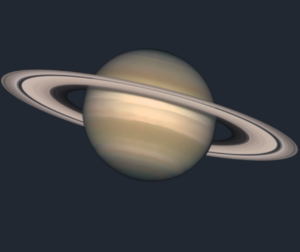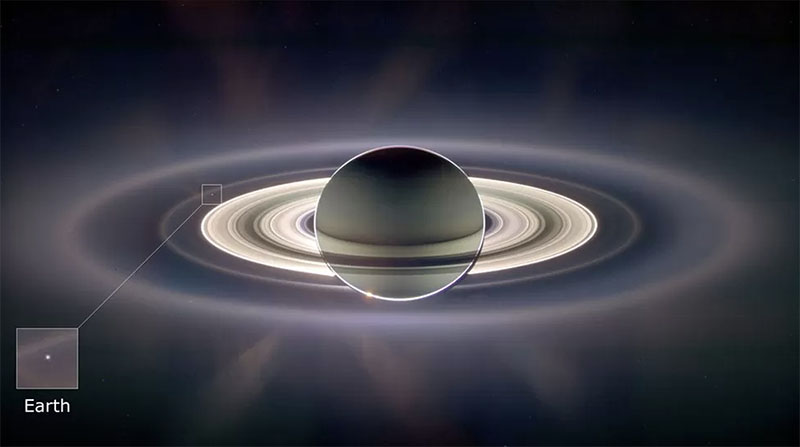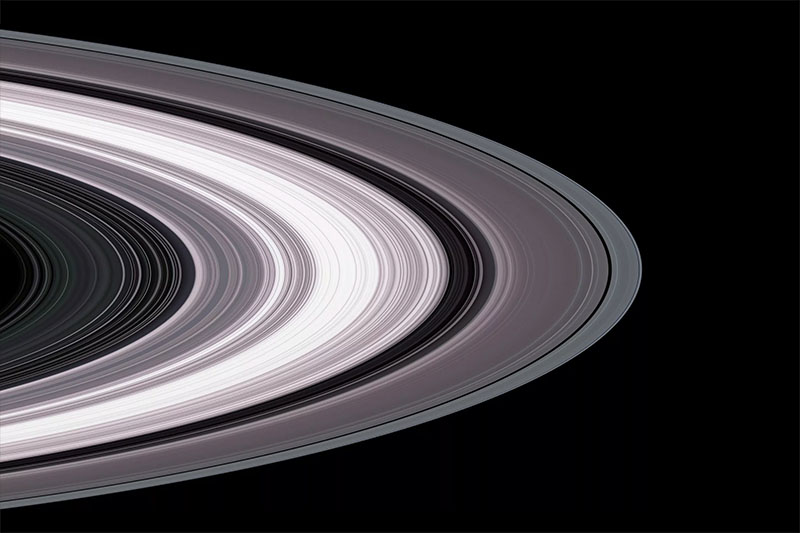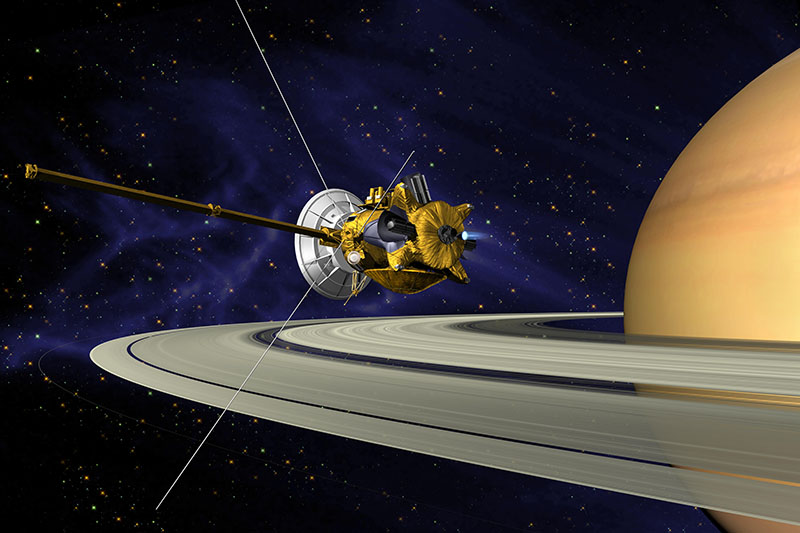
Saturn is the second largest planet in the solar system and the sixth largest by distance from the Sun (1,427 million km). It is better known for the beauty of its rings than for its internal characteristics, which make it similar to Jupiter. Its structure consists of a rock core that concentrates 26% of its mass. Above this core is a mantle of liquid hydrogen followed by an atmospheric layer of gases. Its density is only 0.69 g/cm³, that is, less than that of water; which suggests that Saturn is basically composed of hydrogen. Saturn releases more heat into space than it receives from the Sun; This is because inside the gases are compressed, heated and transmitting this heat to space.
Saturn's rings are its most distinctive quality. They are made up of a multitude of small bodies whose sizes range between that of a marble and a basketball. The rings are 27,5000 kilometers in diameter, but their thickness is less than a kilometer.
Saturn, the lord of the rings
Saturn, sixth from the Sun, is the second largest in the Solar System and is very similar to its neighbor Jupiter. A curious detail is that it is the only planet that has a density lower than that of water (0.70 g/cm3), which would allow it to float in a giant ocean, if one so large existed. Its rotation lasts 10 hours and 40 minutes, producing a marked flattening at the poles and perhaps the reason for the permanence of its rings.


The rings are divided into four subrings. The F ring, the outermost of all, is very thin compared to the others. The next is ring A, much wider than ring F. Next comes the Cassini Division, which is a space that separates rings A and B. After this division are rings B and C. The origin of The rings are surely due to an ancient satellite that was too close to Saturn, so its gravitational force ended up destroying it into small fragments.
Until the second half of the '70s, Saturn and its rings were considered an exclusive and unique star of its kind. But in 1977 rings were discovered on Uranus and would later be found on Jupiter. The rings are divided into about 7 layers according to their composition and size of their components, which can range from the size of a large car to a basketball. They are composed of frost, dust and some solid rock remains that keep rotating and giving the impression that it is a single ring with a single body, making it very impressive.
The probes that have visited Saturn revealed an atmospheric composition similar to that of Jupiter and several details about one of its moons, Titan; It has been concluded that it maintains a liquid ocean, not of water, but of methane, which was confirmed when the Huygens probe landed on the satellite. Saturn has also been flown by the Pioneer 10 and Voyager 1 and 2 probes. The Cassini-Huygens mission has been particularly revealing, giving us an enormous amount of data about Saturn and its satellites.

The Huygens mission dove into Titan's atmosphere in mid-January 2005, obtaining data on its atmospheric composition and images of its surface. Additionally, one of the biggest discoveries of this mission was the discovery of frozen water on the moon Enceladus.
| CHARACTERISTICS | |
| Diameter | 120,536 km |
| Mass | 5,688 x 1026 kg |
| Density | 0.69g/cm3 |
| Gravity | 9.05 m/s2 |
| Surface temperature | -130 ºC (med) / -191 ºC (min) |
| Axial inclination | 26.73° |
| Escape velocity | 35.49 km/s |
| Rotation | 10h 39m 25s |
| Translation | 29 to 167 d 6 h |
| Orbital speed | 9.67 km/s |
| Eccentricity | 0,05415060 |
| Albedo | 0,47 |
| Distance to the Sun (average) | 1,426,725,400 (9.54 AU) |
| Number of satellites | 62 (known) |

